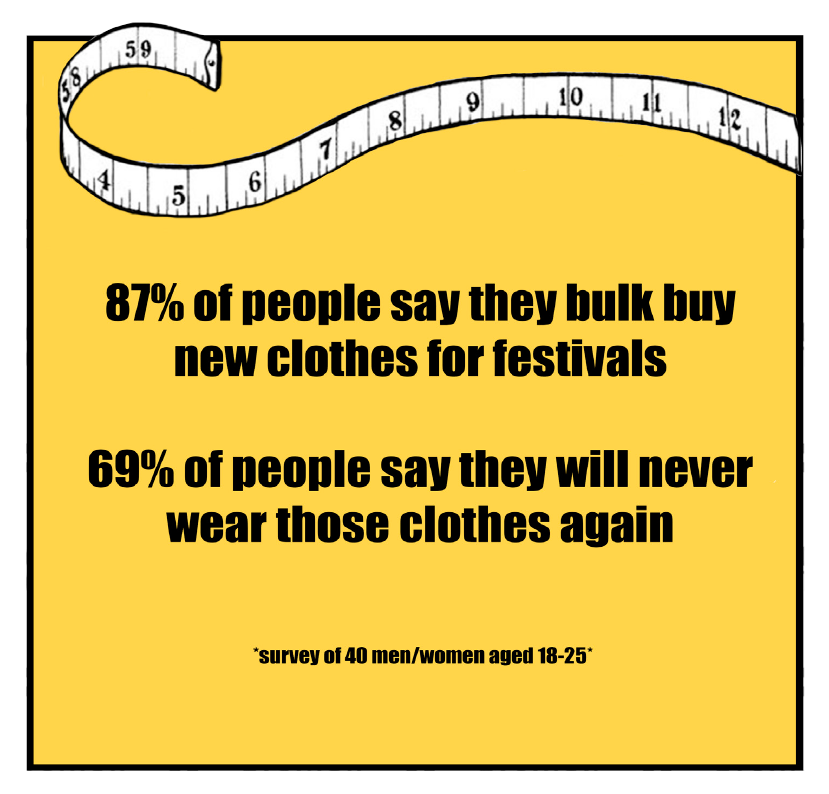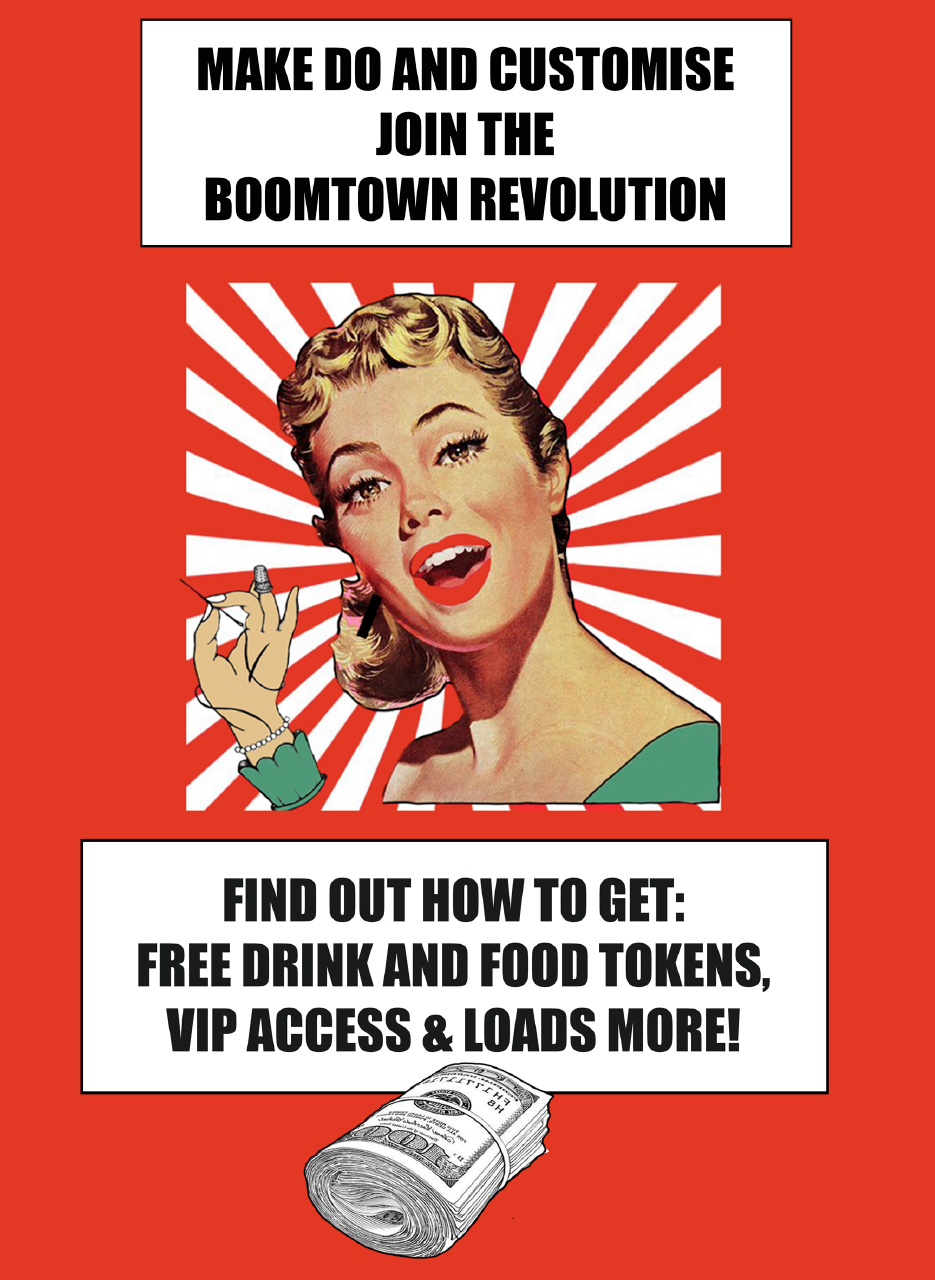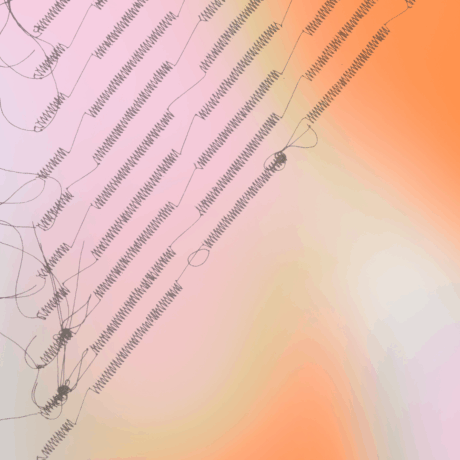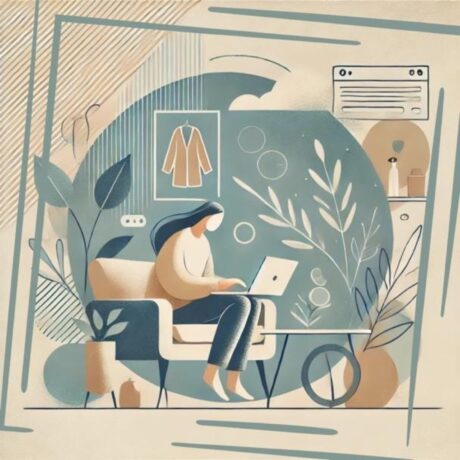The Boomtown Revolution: Changing Perceptions of Festival Fashion
Each year, Fashion Revolution’s creative team collaborates with the BA (Hons) Fashion Communication course at Northumbria University to inspire fashion’s next generation to campaign for a fair, safe, transparent and accountable fashion industry. Below, student Rachel Taylor shares her experience with the brief.
A hedonistic array of lights, people and music fills the otherworldly landscape of Boomtown festival. The fashion is unapologetic, a frantic kaleidoscope of colours and prints. Boomtown is a place where people go to dance, laugh and escape; all who enter dive deep into the rabbit hole of immersive sets and spectacle. Behind the wonder though, there is a sinister trend. Each festival goer is dressed up for the occasion – and festival fashion is largely bought to be worn for just that moment. The cowboy hats, the cheap glamour, the need for a myriad of carefully curated outfits and accessories – it’s so tempting!
Yet, when looking for festival fashion, how much time is taken to buy well or to reinvent the clothes you already have? How much thought goes into not just what it looks like, but asking #whomademyclothes? Where does all this festival fashion go afterwards – to the dump, back into the wardrobe for next time, or gifted on to the next fan?
As a Fashion Communication student at Northumbria University, I was given an amazing opportunity to work on a live brief with Fashion Revolution. I was able to learn about current issues surrounding sustainability, challenged to consider how I could contribute to a more thoughtful fashion future and encourage transformation in the Gen Z consumer mindset and subsequent behaviour.
I was tasked with becoming a pro-fashion protestor, and to develop a call-to-action strategic PR campaign to inspire individuals to take account of their actions, to behave in mindful ways and be a dynamic force for good in years to come.

First, I needed to delve into the mind of Gen Z, the audience of my campaign. Shockingly, a survey I conducted of 40 men and women aged between 18-25 revealed that 87% of people said they bulk buy new clothes for festivals. A staggering 69% of people said they would never wear those clothes again. I know from personal experience as a student, the allure of fast fashion is powerful. If I’m being honest, there’s been more than one occasion where I have splurged on fast fashion after booking a last-minute festival (I’m only human). My research made one thing very clear – that Fashion Revolution has a real opportunity to help make the phenomenon of festival fashion more sustainable and to change the trend towards clothes.
In essence, my campaign is a pilot concept focusing on launching at Boomtown festival. The campaign focuses on encouraging the festival goers to customize and upcycle their current clothes instead of bulk buying new ones. The aim is to stimulate creativity, a love of personalisation and imagination, and inspire a mindset shift whereby clothes are loved, have longer lives and nothing goes to waste.
My project proposed that Fashion Revolution partnership with Boomtown festival. With every Boomtown ticket sold, the festival-goer would be sent a Make Do and Customise zine by Fashion Revolution (digital, downloadable and printable). The zine would instruct the reader to find an old item of clothing and sew on the provided Boomtown Revolution patch. Festival goers would then be instructed to wear their customised look to the festival. Hashtags such as #boomtownrevolution and #makedoandcustomise would generate significant hype from Gen Z. This would make noise about the campaign and Fashion Revolution.

Once at the festival, the revolution patch helps festival goers to claim their rewards at the Boomtown Revolution stand: free food, drinks tokens, discount off their next festival ticket, free use of the luxury portaloos (a major incentive to Gen Z!). Experiences on offer at the stand would be inspirational Make Do and Customising upcycling workshops run by Fashion Revolution and guests, – these would consolidate and tell the story of Fashion Revolution, debate sustainable development and our relationship with clothes, and teach people how to personalise their clothes. The potential reach for Fashion Revolution is 55,000 people at Boomtown festival.
For Boomtown, the collaboration with Fashion Revolution would expand and improve their sustainable business strategy. Boomtown has already made positive steps towards its goal of being a fully sustainable city, and this partnership could help festival goers make more sustainable fashion choices.
My campaign was inspired by the Make Do and Mend movement of the 1940s. In the war years, clothes rationing meant people had to Make Do and Mend their clothes. Looking back, it was a very sustainable way to approach fashion. Subsequently, a key source of design inspiration was war-time propaganda posters. The retro red that is used throughout my campaign is often associated with revolutions. I felt that this was a powerful way that Fashion Revolution could assert their presence and message.
Once this pilot launch has gone well, the project would expand to festivals all over the world with Fashion Revolution leading the way to inspire Gen Z to sustainable festival fashion style.
I think it is vital that festivals encourage their participants to dress with ethics and sustainability in mind. Creating a campaign for Fashion Revolution has been eye-opening and fulfilling. Learning about the social and environmental costs of the fashion industry has deeply shocked and resonated with me. It has transformed my mindset and now I am really starting to realise my own individual responsibility and duty to this planet. We have to be brutally honest to ourselves about our own spending habits in order to really make long-term positive changes that prioritise the planet and each other. Since responding to this project and developing my campaign concept, I’ve cut down on the amount of clothes that I buy and choose to follow brands that have sustainability at their core. Fashion Revolution’s Transparency Index has been particularly helpful in me achieving this as I started by reading through this and researching into brands from there. I also sell the clothes I have finished wearing on, so that my clothes get to live on and make new memories with someone else.
When I started the project and began coming up with the initial ideas for my campaign back in February, the world was a very different place. I was also a very different person. I never dreamt that festivals all over the world would be cancelled and we would be in the midst of a global pandemic. I never thought that the fashion landscape could be so affected and it might give us the space to question what have we grown up thinking was normal behaviour? Although the future is uncertain, I feel positive that festivals will return and that we will once again be able to dance together and celebrate life. Lockdown has given us all an opportunity to reflect and think about what is important. We have a true chance now to change our values and bring sustainability to the forefront of everything we creatively do. This is our moment to make a change, question and break our old consumer habits and be resourceful and respectful with what we have, where it has come from and where it may best go on to. This could be a new form of hedonism – let’s get high on sustainable festival fashion.
Follow me on Instagram at: @rachel_taylor_creative
And check out @FashionCommNorthumbria








